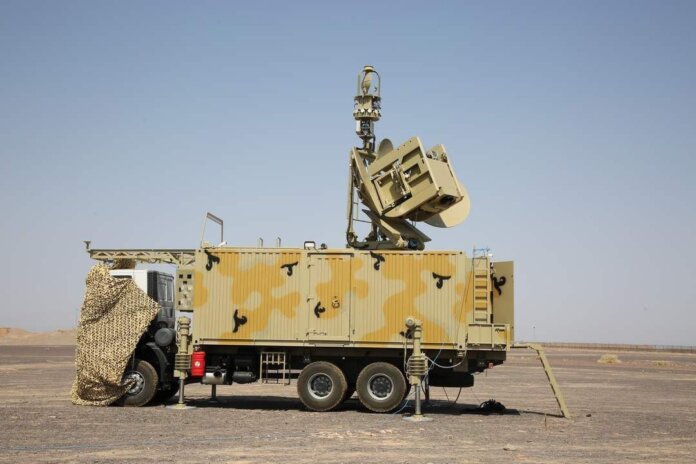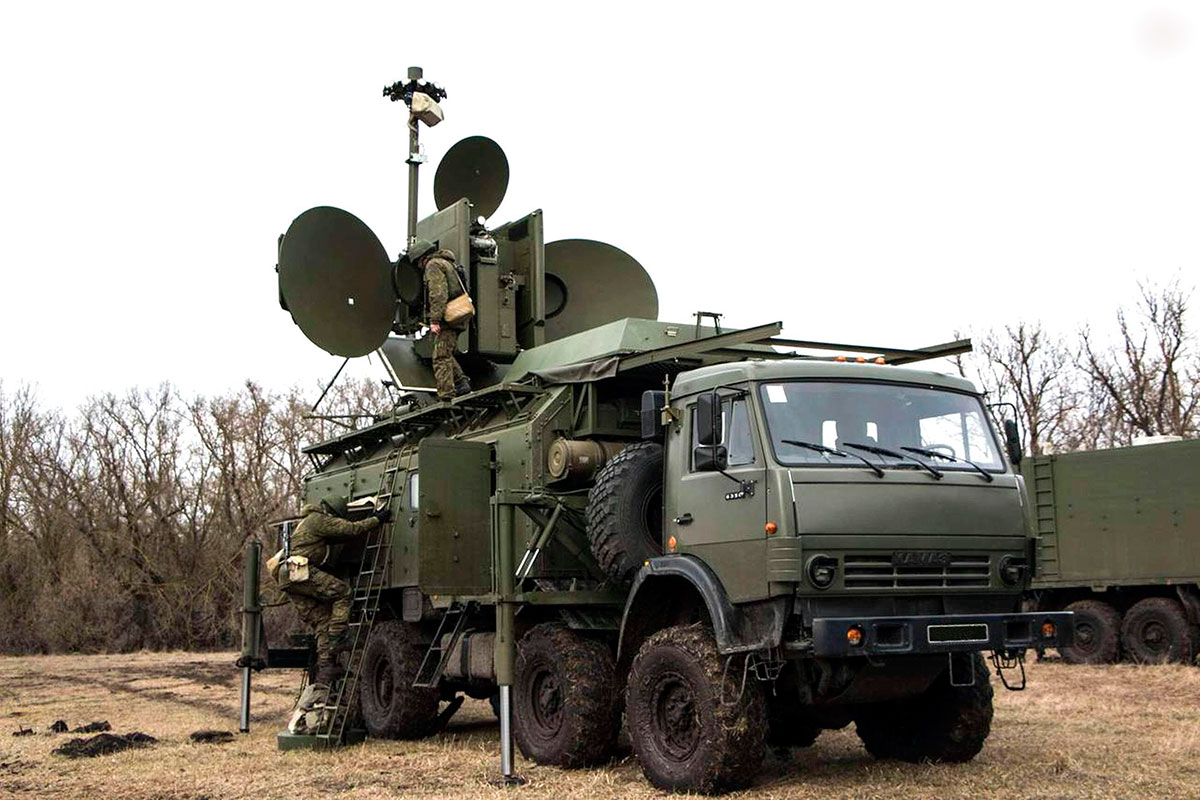
Iran claims to have new jamming capabilities in the form of the Cobra-V8, but is this simply a re-badged Russian Krasukha-4 electronic attack system, and how capable might it be?
Is the Islamic Republic of Iran’s Cobra-V8 Electronic Warfare (EW) system an indigenised version of Russia’s 1RL257E Krasukha-4 EW platform? It certainly looks that way. News came to light on social media in mid-March that Cobra-V8 systems had supported a recent Iranian military exercise. At first blush, Iran’s equipment bears a strong resemblance to its Russian counterpart. This is arguably most visible in the antenna ensemble atop the container on the rear of the vehicle. On the 1RL257E two circular antennas are positioned either side of two large horizontal plates. These plates presumably prevent the sidelobes spreading out around the main jamming beam interfering with beams from the other antennas. A closer look at the antennas assembly reveals that they point inwards. This configuration may help ensure that jamming beams are focused on the target. Whether Iran has purchased the 1RL257E directly from Russia or manufactures it under licence is unknown. The fact that the system is designated as the Cobra-V8 seems to suggest local or licenced manufacture.
Targets
Information in the public domain says that that 1RL257E attacks airborne emitters using frequencies of eight gigahertz/GHz to 18GHz. This waveband would be sufficient for the 1RL257E to target airborne X-band (8.5GHz to 10.68GHz) radars and Satellite Communications (SATCOM). Airborne Ku-band (13.4GHz to 14GHz/15.7GHz to 17.7GHz) radars and SATCOM (14GHz uplink/10.9-12.75GHz downlink) could also be targeted. Public information continues that Krasukha-4 can engage airborne targets at between one degree and 60 degrees’ elevation across a 360-degree radius.
The 1RL257E is advertised as being capable of attacking airborne emitters at up to 162 nautical miles/nm (300 kilometres/km) range. According to Russian language documents seen by Armada, Krasukha-4 can transmit up to 64 decibels/dB of jamming energy. The system may have an antenna gain of 96.5dB based on the circa one metre (3.3 feet) diameter of the circular antennas. Gain is basically a measurement of how much energy an antenna can focus onto a target, much like how a magnifying glass can focus sunlight.
Performance
For this discussion, we will assume that the 1RL257’s target is a combat aircraft with a ten square metre Radar Cross Section (RCS). RCS is a measurement of how large, or small, a target appears to a radar. Let us assume the Krasukha-4 is transmitting a jamming signal on a frequency of 8.2GHz. The signal is travelling across its full advertised range of 162nm against a target with a seven square metre RCS.
According to our own rough back-of-the-envelope calculations, the jamming signal would leave the 1RL257E with 64dB of strength. Nonetheless, it would lose 77.4dB of strength during its journey. Thus, the jamming signal would have a strength of -13.4dB when it reaches the target. This is not the whole story as the jamming signal must move through the atmosphere which also causes it to lose energy, in this case up to 160.3dB. Taken on its own, the jamming signal may now have a strength of -96.3dB when it reaches the target. We must also add the 77.4dB signal loss, meaning that the jamming signal may have a combined strength of -173.7dB. Decibels are a tricky thing to explain, but a basic rule says that the closer the figure is to zero the stronger the signal. It is possible that at such ranges jamming signals this weak may not be able to ‘wash out’ the signal strength of the radar or SATCOM system they are trying to attack.
Iran’s deployment of the Cobra-V8 is a cause for concern and something that allied powers, who may have to face the country’s military in any future conflict, should take seriously. Nonetheless, the capabilities of such systems can sometimes be exaggerated for propaganda purposes.

by Dr. Thomas Withington












